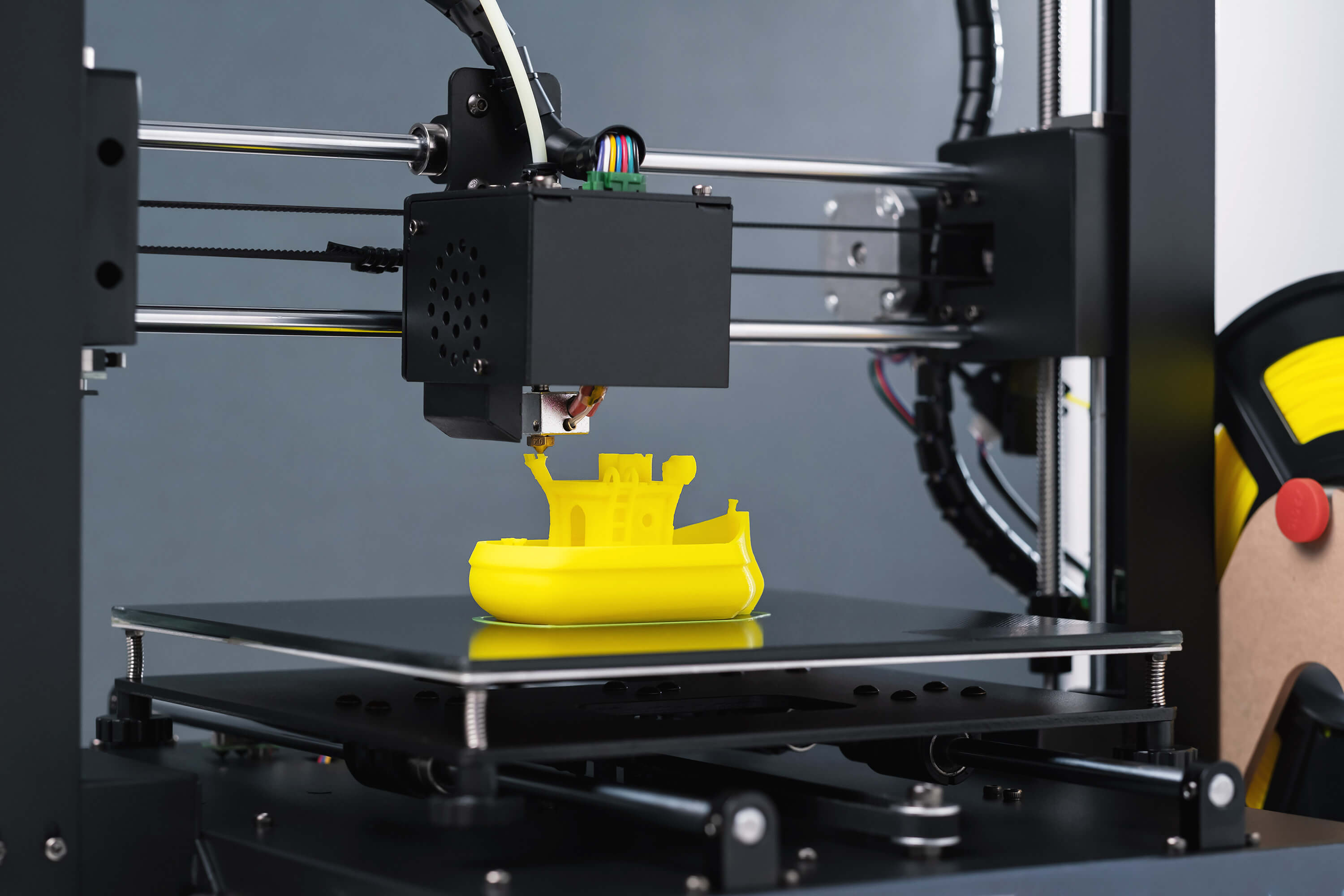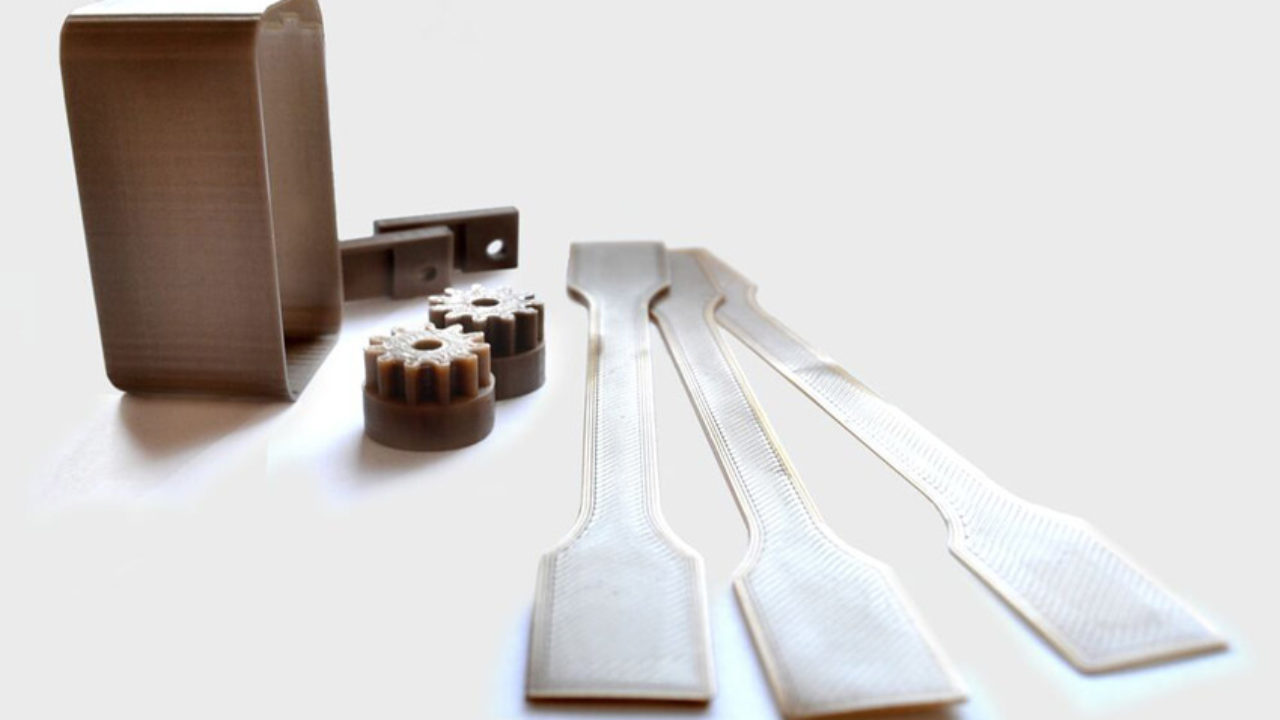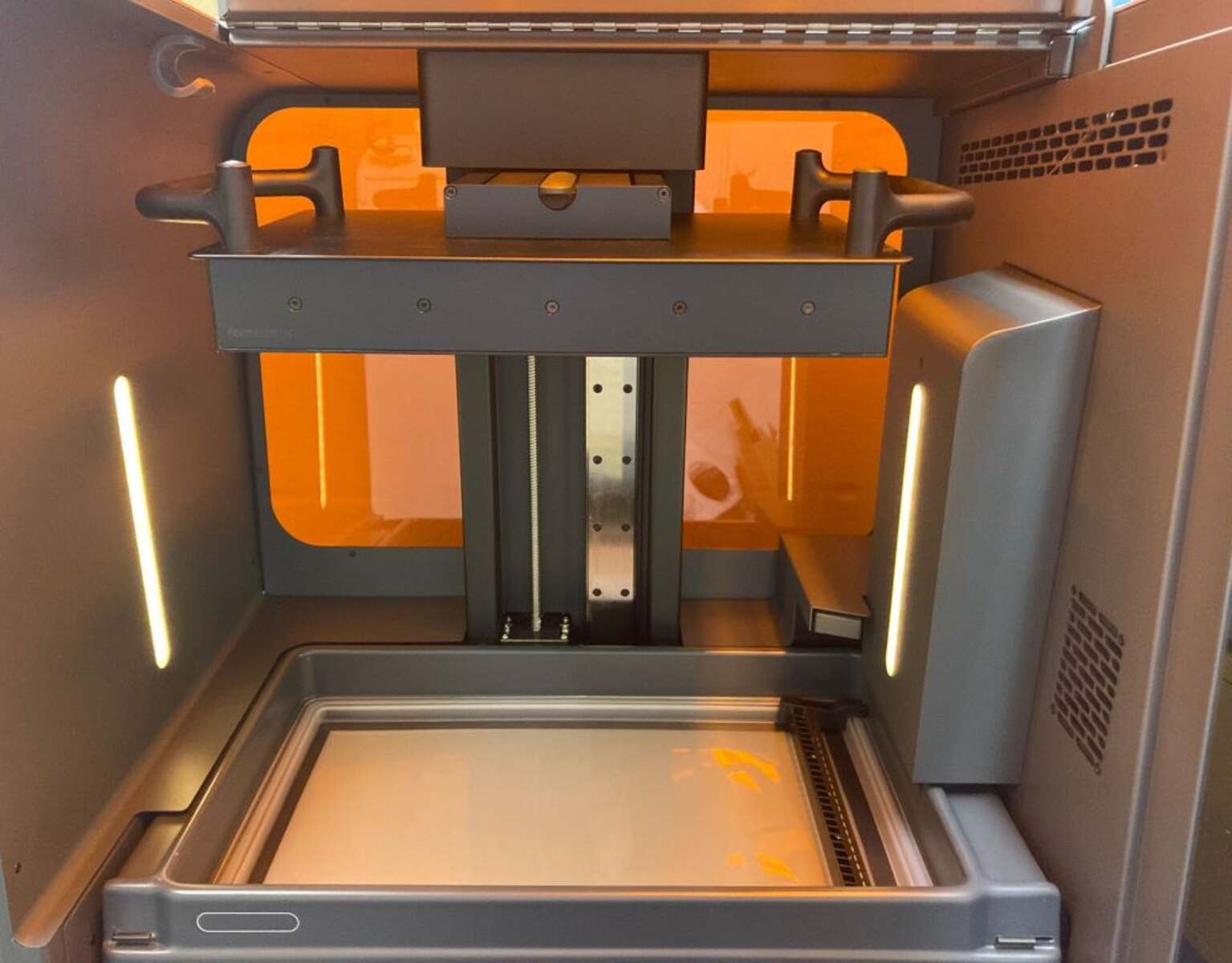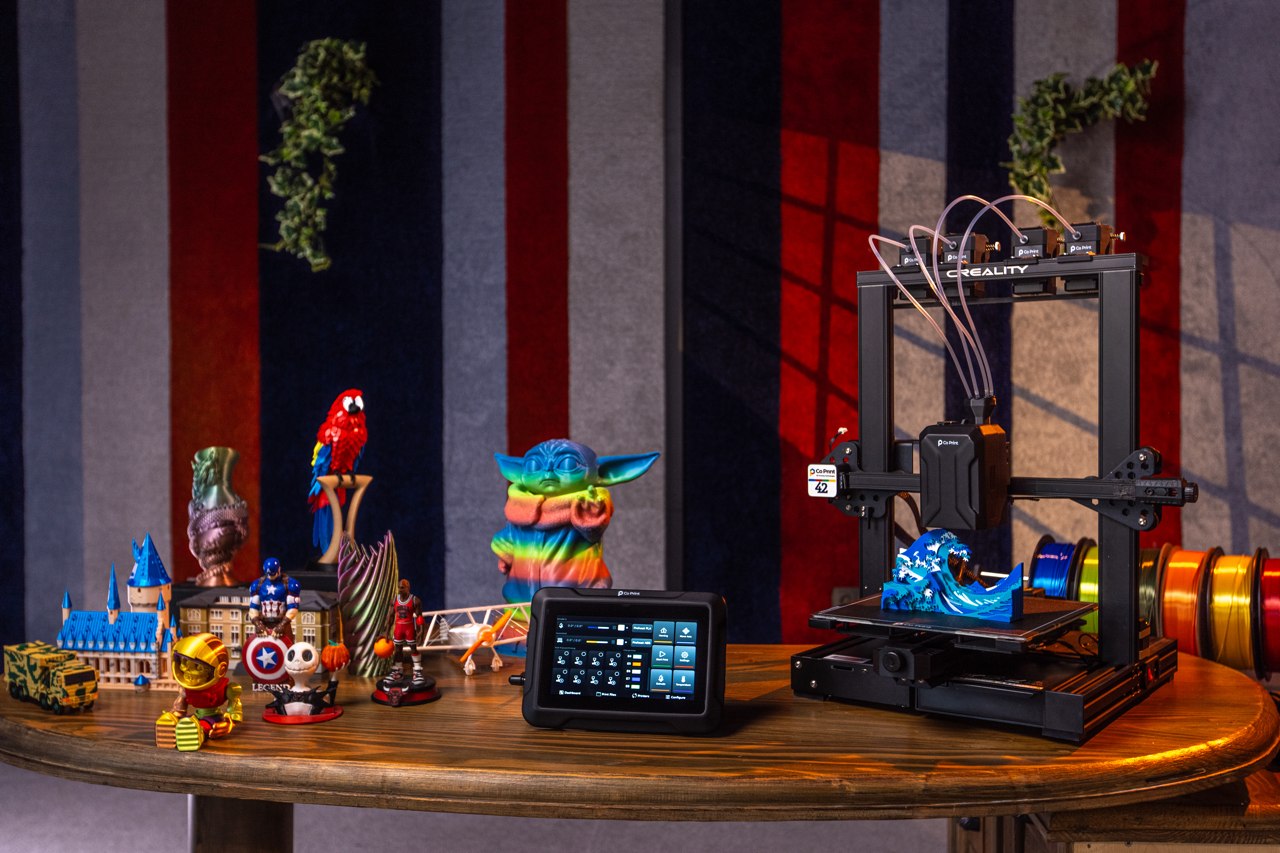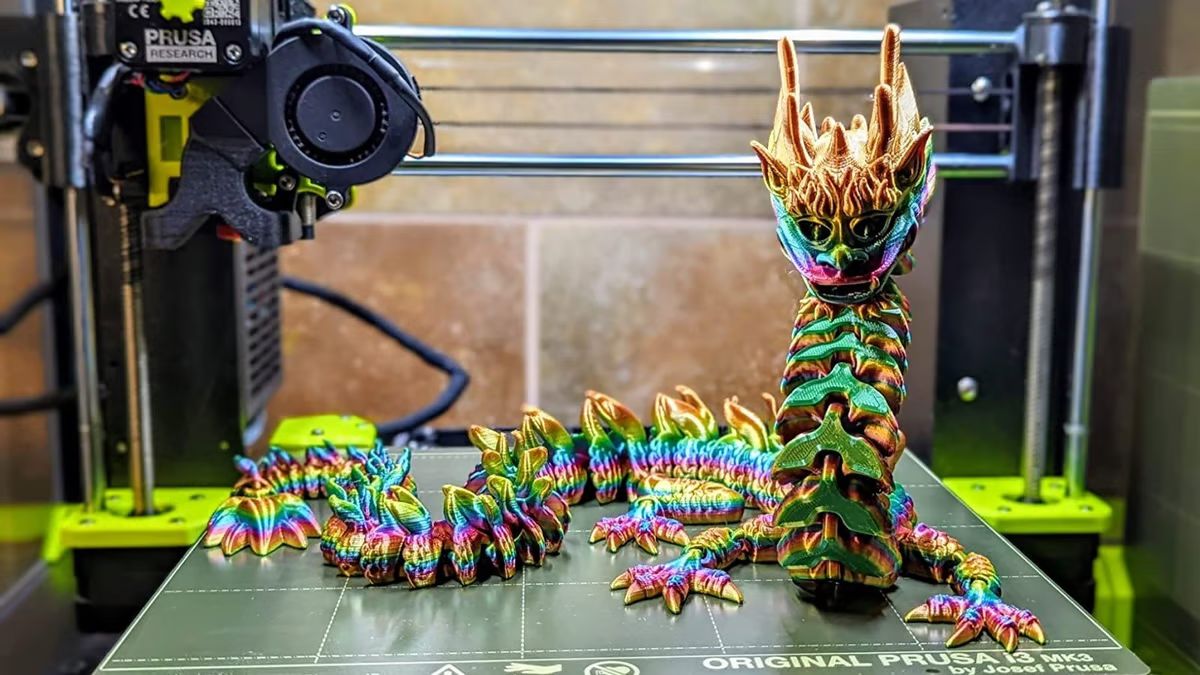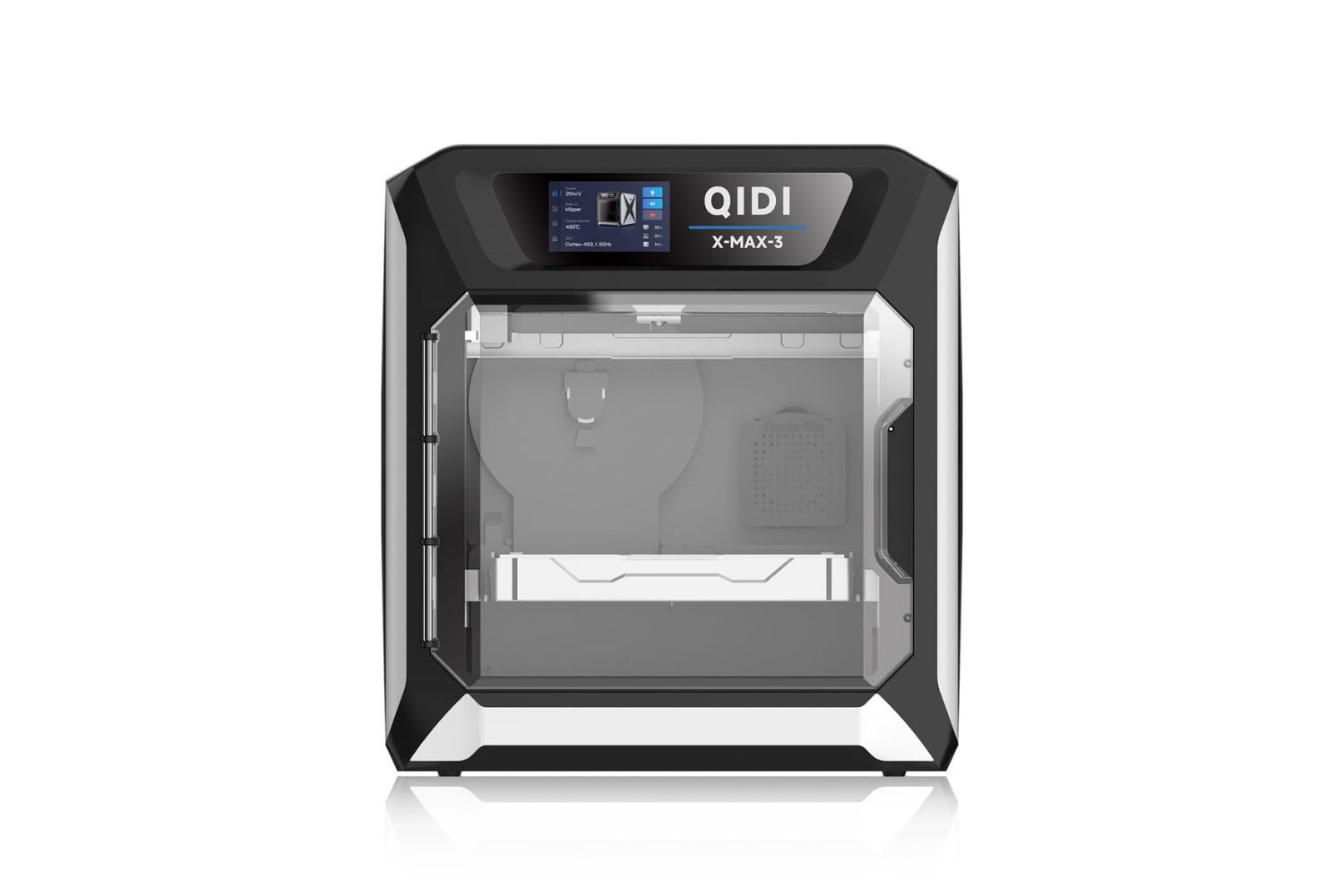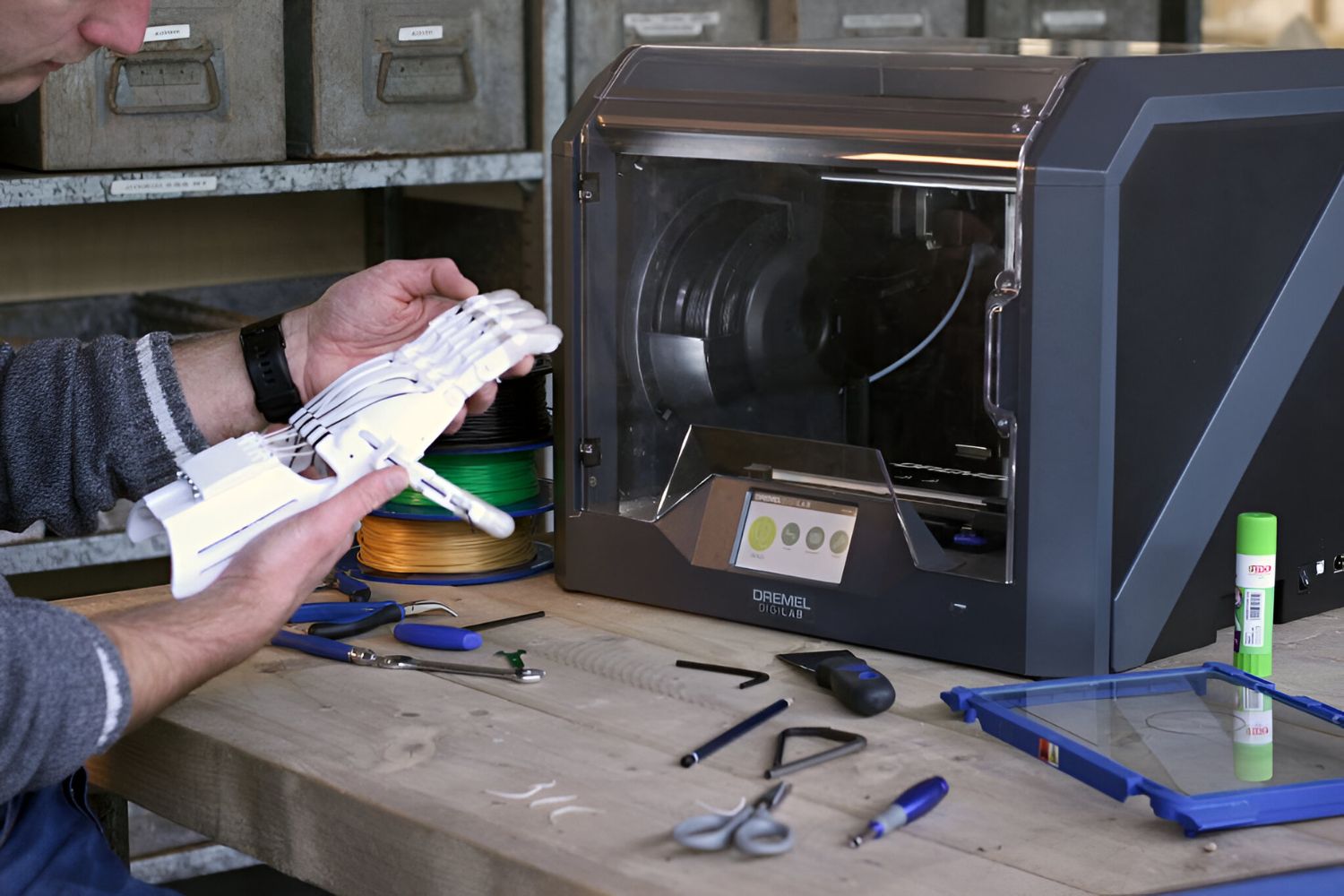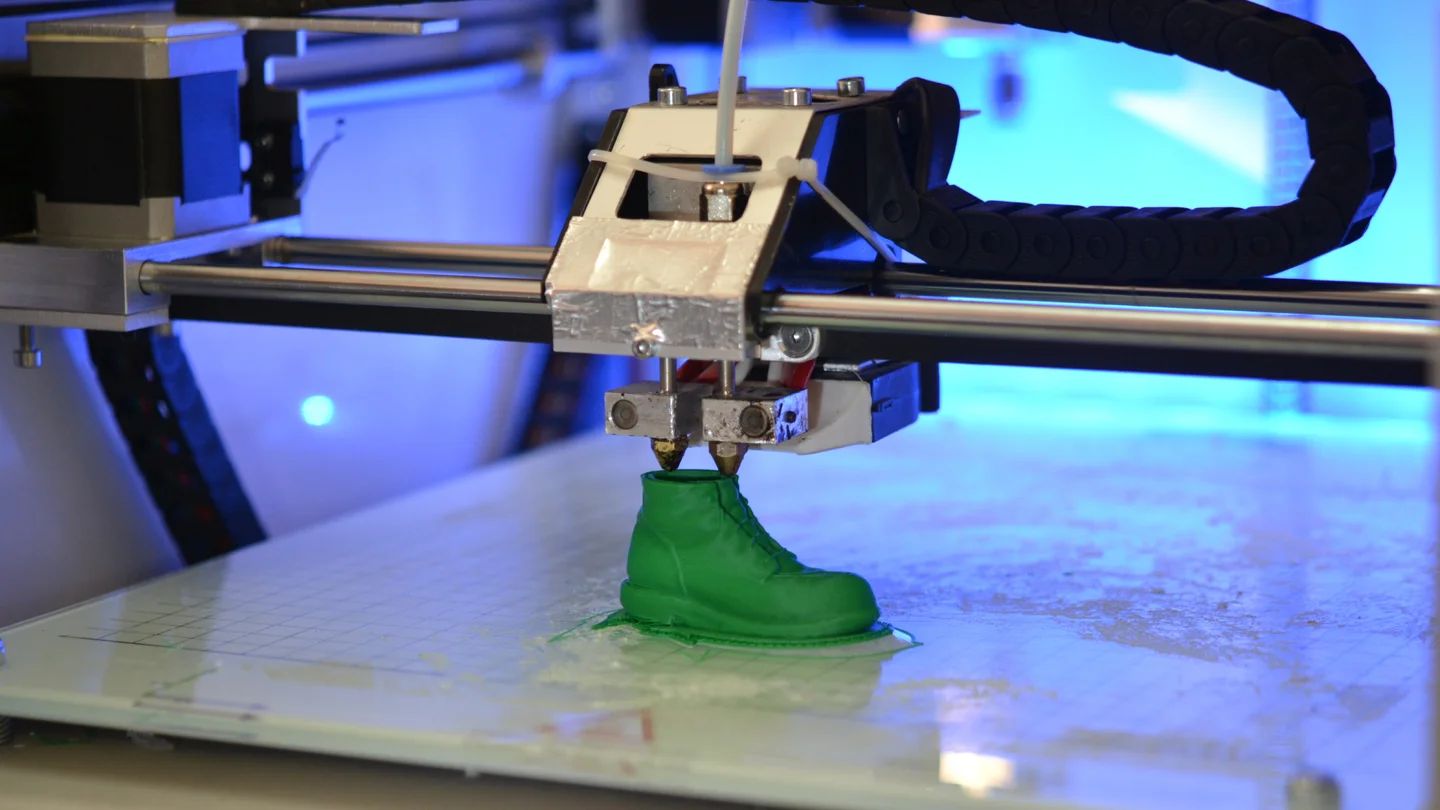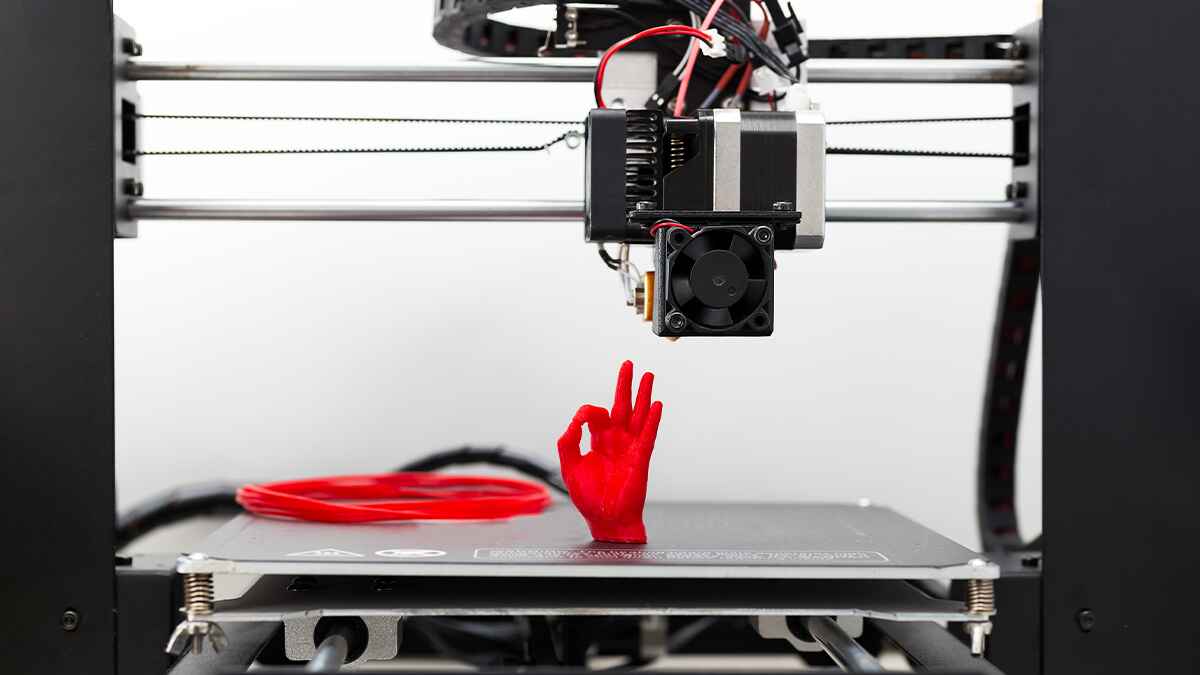Introduction
A 3D printer is a revolutionary device that has transformed the way we create and manufacture objects. Unlike traditional 2D printers that can only produce flat images on paper, 3D printers can fabricate three-dimensional objects by layering materials such as plastic, resin, or metal. This technology has opened up endless possibilities in various industries, ranging from manufacturing and engineering to healthcare and art.
One of the most fascinating aspects of 3D printing is the wide range of materials and techniques that can be used to create different types of output. From intricate prototypes and functional parts to stunning art pieces and jewelry, 3D printers have the ability to bring even the most complex designs to life.
In this article, we will explore the different types of 3D printing techniques and the diverse output they can produce. Whether you are new to the world of 3D printing or an enthusiast looking to expand your knowledge, this article will provide you with insights into the incredible capabilities of 3D printers.
3D Printer Basics
Before diving into the various types of output that a 3D printer can create, it is important to understand the basic workings of this incredible machine. At its core, a 3D printer follows the process of additive manufacturing, which means it builds an object layer by layer.
There are several different types of 3D printers, but they all share some common components. These include a build platform, where the object is constructed, a print head or extruder, which deposits the material, and a computer or controller that guides the printing process.
The material used in 3D printing is typically in the form of filaments, which are thin strands of plastic or other materials. The filament is fed into the print head, where it is heated and melted. The melted material is then extruded onto the build platform according to the design instructions provided by the computer.
In addition, some 3D printers use a different method called resin-based printing. Instead of using filaments, these printers use liquid resin that is cured, or hardened, using a UV light source. This technique allows for highly detailed and precise output.
Another type of 3D printing is powder-based printing. In this method, a fine powder material, such as nylon or metal, is deposited onto the build platform layer by layer. A binder or adhesive is selectively applied to fuse the powder together and create the desired object.
Filament-based Printing
Filament-based printing is the most common and widely used method in 3D printing. As mentioned earlier, it involves feeding a spool of filament into the print head, where it is melted and extruded to build the object layer by layer.
There are various types of filaments that can be used, each with its own properties and applications. Some common types include PLA (Polylactic Acid), ABS (Acrylonitrile Butadiene Styrene), PETG (Polyethylene Terephthalate Glycol), and TPU (Thermoplastic Polyurethane).
PLA is a popular choice for beginners and hobbyists due to its ease of use and environmentally friendly nature. It is derived from plant-based sources and produces minimal fumes during printing. ABS, on the other hand, is known for its strength and durability, making it suitable for functional parts and prototypes that require impact resistance.
One of the significant advantages of filament-based printing is the wide range of colors available. Manufacturers produce filaments in a spectrum of colors, allowing users to create vibrant and visually appealing output. Additionally, filaments can also be mixed to achieve unique color combinations or even infused with additives like metallic flakes or glow-in-the-dark particles for special effects.
Filament-based printing is versatile and can produce a variety of output. It is commonly used to create prototypes and models for design validation and testing. From engineering components and architectural models to intricate figurines and toys, filament-based printers can bring designs to life with impressive detail.
Furthermore, filament-based printing is not limited to solid objects. With the use of specialized infill patterns, it is possible to create hollow structures, reducing material consumption and print time while maintaining the required strength.
Resin-based Printing
Resin-based printing, also known as stereolithography (SLA), utilizes liquid resin as the raw material instead of filaments. This method offers exceptional precision and produces output of high detail and smooth surface finish.
Resins used in 3D printing are composed of photopolymerizable materials that solidify when exposed to UV light. The printer uses a process called curing, in which the UV light selectively hardens the resin layer by layer to create the desired object.
One of the main advantages of resin-based printing is its ability to create intricate and delicate structures. It can produce intricate details, intricate geometries, and smooth curves that are difficult to achieve using filament-based printing. This makes resin-based printing ideal for applications that require fine details, such as jewelry, dental models, and miniature figurines.
In addition to high detail, resin-based printing also offers a wide range of resin types to choose from. There are resins available for specific purposes, such as clear resins for transparent objects, flexible resins for rubber-like parts, and high-temperature resins for functional prototypes that can withstand heat.
However, it is important to note that resin-based printing requires post-processing. The printed object needs to be washed in a solvent to remove excess resin, and in some cases, it may also require additional curing or post-curing using UV light to ensure maximum strength and durability.
Resin-based printing is particularly favored by professionals in fields such as dentistry, jewelry design, and engineering where intricate details and accuracy are of utmost importance.
Powder-based Printing
Powder-based printing, also known as powder bed fusion, is a 3D printing technique that utilizes a fine powder material as the base. This method enables the creation of complex and highly detailed objects with a wide range of materials, including nylon, metal, and ceramics.
In powder-based printing, a thin layer of powder is spread onto the build platform, and a heat source, such as a laser or electron beam, selectively fuses the powder particles together based on the design specifications. Once a layer is completed, a new layer of powder is applied on top, and the process is repeated until the entire object is formed.
One of the significant advantages of powder-based printing is the ability to create objects with excellent structural integrity. The fusion of powder particles creates strong and durable output, making it suitable for functional parts, biomedical implants, and even aerospace components.
In addition to strength, powder-based printing can also produce objects with a high degree of complexity. It can create intricate internal structures and intricate geometries that would be challenging or impossible to achieve with other 3D printing methods. This makes it a preferred choice for applications that require lightweight and optimized designs, such as lattice structures and porous materials.
Powder-based printing is also known for its ability to use a wide range of materials, including metals like titanium, aluminum, and stainless steel. This opens up opportunities for manufacturing customized metal parts with high precision and accuracy.
However, it is worth noting that powder-based printing often requires additional post-processing steps. The printed object needs to be carefully cleaned to remove excess powder and undergo further treatments like sintering or heat treatment to achieve the desired material properties and surface finish.
Overall, powder-based printing offers great versatility and is particularly valued in industries that require complex structures, strong materials, and precise geometries.
Output Examples: Prototypes and Models
One of the main applications of 3D printing is the creation of prototypes and models. With the ability to quickly bring ideas into physical form, 3D printers have revolutionized the product development process.
Prototyping using 3D printing allows designers and engineers to iterate and test their designs in a cost-effective and time-efficient manner. Instead of waiting for weeks or months for a prototype to be manufactured using traditional methods, 3D printers can produce functional prototypes in a matter of hours or days.
3D-printed prototypes offer a range of advantages. They can be easily modified and improved based on feedback and testing results, allowing for rapid design iterations. This flexibility allows designers to fine-tune their products, resulting in higher-quality end products.
Moreover, 3D printing enables the creation of complex geometries and intricate details that would be challenging or impossible to achieve with traditional manufacturing methods. This allows designers to accurately visualize and test the functionality of their products before going into mass production.
In addition to prototypes, 3D printing is also widely used in the production of models. Architecture firms, for example, can create scaled models of buildings, showcasing every intricate detail and helping clients visualize the final structure. Similarly, the automotive industry leverages 3D printing to produce scaled models of cars for design evaluation and concept visualization.
With the availability of a wide range of materials and colors, 3D-printed prototypes and models can closely resemble the final product. This adds to their value as presentation pieces for marketing purposes or as visual aids for educational and training purposes.
Overall, 3D printing has transformed the prototyping and modeling process, empowering designers and engineers to bring their ideas to life quickly, efficiently, and with a high level of detail and accuracy.
Output Examples: Functional Parts
3D printing is not limited to just creating prototypes and models; it can also be used to fabricate functional parts that are ready for use in various industries.
One of the key advantages of 3D-printed functional parts is the ability to create customized and on-demand solutions. Traditional manufacturing often requires expensive tooling and long lead times, making it difficult and costly to produce small batches or one-off parts. With 3D printing, however, designers can quickly produce functional parts in low volumes or even as single pieces, saving time and reducing costs.
Industries such as aerospace, automotive, and healthcare have been quick to adopt 3D printing for functional parts production. Complex and lightweight components, like brackets, housings, and connectors, can be fabricated with intricate internal structures and optimized geometries, resulting in reduced weight, improved performance, and increased fuel efficiency.
Medical applications of 3D-printed functional parts have shown tremendous potential. Customized prosthetics and orthotics can be tailored to fit each individual’s specific needs, enhancing comfort and improving quality of life. Surgical guides and implants can be designed and printed based on patients’ anatomy, leading to more precise and successful surgeries.
3D printing also enables the production of spare parts and replacements. This is particularly beneficial in industries where spare parts may no longer be readily available due to age or discontinued production. Instead of costly and time-consuming searches for obsolete components, a 3D printer can recreate the required part, ensuring the continued operation of machinery and equipment.
The ability of 3D printers to work with a variety of materials, including plastic, metal, and composite materials, further expands the range of functional parts that can be produced. From high-strength components for industrial machinery to specialized tools and equipment, 3D printing has proven to be a viable and efficient method for manufacturing functional parts in various industries.
Output Examples: Art and Jewelry
3D printing has not only revolutionized the world of manufacturing and industry but has also made a significant impact in the realm of art and jewelry. Artists and designers are now able to push the boundaries of creativity and produce unique and exquisite pieces that were previously unimaginable.
One of the most exciting aspects of 3D-printed art is its ability to create intricate and complex structures that would be extremely difficult to achieve using traditional techniques. Artists can explore intricate geometries, organic shapes, and intricate textures that add depth and dimension to their creations.
3D printing also allows for customization and personalization in art and jewelry. Artists can easily modify and adjust designs to suit individual preferences or create one-of-a-kind pieces. This level of flexibility and versatility opens up new possibilities for artists to express their creativity and create highly personalized artworks.
When it comes to jewelry, 3D printing offers tremendous advantages. Jewelry designers can create intricate and detailed patterns that would be challenging to achieve manually. From delicate filigree and textured surfaces to unique and unconventional shapes, 3D printing enables jewelers to bring their visions to life with precision and accuracy.
The ability to work with a wide range of materials, including metals like gold, silver, and titanium, allows for endless possibilities in jewelry design. These materials can be combined, mixed, and even infused with gems or other precious materials to create stunning pieces of wearable art.
Additionally, 3D printing has made jewelry more accessible to a wider audience. Customization options, affordability, and the ability to create unique designs attract those who seek one-of-a-kind pieces that reflect their personal style and taste.
The intersection of technology and art has given rise to an exciting era of innovative and avant-garde creations. From sculptures and installations to intricate jewelry pieces, 3D printing has empowered artists and designers to push the boundaries of traditional art forms and redefine what is possible in the world of art and jewelry.
Conclusion
3D printing has revolutionized various industries and opened up a world of possibilities. From prototyping and functional parts production to art and jewelry, this technology has transformed the way we create and manufacture objects.
With filament-based printing, we can quickly bring ideas into physical form, create prototypes for testing, and produce functional parts with customized designs. Resin-based printing offers unparalleled precision and detail, making it ideal for creating intricate jewelry pieces and highly accurate prototypes. Powder-based printing enables the production of complex and lightweight functional parts with various materials, from metals to ceramics.
Through 3D printing, artists and designers can explore new realms of creativity, pushing the boundaries of traditional art forms and creating highly personalized and unique works. Jewelers can craft intricate and customized jewelry pieces that reflect individual styles and preferences.
As 3D printing technology continues to advance, we can expect further innovation and expansion in its capabilities. The potential for customization, cost-effectiveness, and design freedom ensures that 3D printing will continue to have a significant impact on industries across the board.
Whether it is in product development, manufacturing, art, or jewelry, 3D printing offers endless possibilities for creativity and innovation. It has truly transformed the way we bring ideas to life, making the impossible possible and shaping the future of design and manufacturing.







